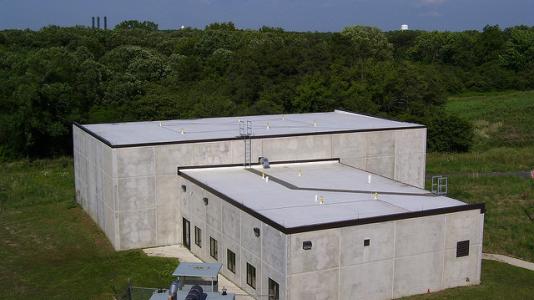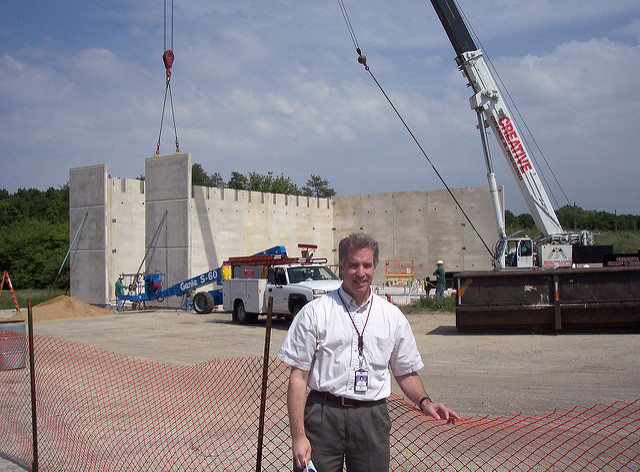
Argonne’s Sub-Angstrom Microscopy and Microanalysis (SAMM) facility, a building that houses cutting-edge microscopes that enable scientists to observe atoms and molecules at work, is so energy-efficient that it won a gold-level Leadership in Energy and Environmental Design certification from the U.S. Green Building Council. LEED certification is a voluntary, performance-oriented standardization that recognizes the country’s most environmentally friendly buildings.
SAMM’s LEED gold certification came as little surprise to Argonne architect George Norek, who led the design of the building. SAMM had earlier received two federal awards honoring Argonne’s efforts to design a building that is both scientifically functional and environmentally friendly.
In many instances, the two goals complement each other, said Norek. The building, which opened four years ago, never had the aroma that often accompanies new carpeting and fresh paint.
“When you can smell paint and carpeting, that’s a sign of off-gassing from the materials,” said Norek. “It can make people sick.”
Using materials containing few or no volatile organic compounds not only assured a more healthful environment for employees but also is an asset to SAMM’s mission.
“You want that equipment as sterile as possible,” Norek said. “Looking at atoms, you don’t want anything bothering it.”
The microscopes are situated on individual floor slabs to avoid disturbances from ground vibrations. Even the body heat from researchers or vibrations from their conversations could affect the sensitive equipment, so people who operate the microscopes are located in separate rooms from their apparatus.
In many instances, designing a green building is just a matter of forethought and doesn’t require extra expenditure, said Norek. For instance, SAMM’s roof is made from highly reflective white material that has a solar reflective index of 95, much higher than the 78 required by LEED standards. “White versus black on the roof doesn’t make a lot of difference in cost,” Norek said.
By reflecting rays from summer sunshine, SAMM requires less energy to keep the building cool, helping Argonne to save taxpayers an estimated $24,000 annually in energy costs. The building also conserves water by utilizing low-flow toilets and waterless urinals.
Ninety-seven percent of SAMM’s drywall is made from recycled materials. Windows can be opened in pleasant weather, and light switches and thermostats enable people working in the building to control their environment.
Some aspects of SAMM’s green operations stem from policies rather than from design or material choices. The most desirable parking spaces near the facility are reserved for carpool vehicles and energy efficient hybrids. Bicycle racks nearby also encourage green commuting.
SAMM is the first Argonne facility to receive LEED gold certification, but the laboratory is also pursuing the designation for many of its other facilities, Norek said. Three other buildings already constructed are undergoing LEED evaluation and Argonne’s energy science building, now in design and expected to be ready in 2014, is also on target to qualify.
“We use these practices in all buildings to keep the environment as clean as possible, provide workers with a clean, comfortable space and not waste energy,” said Norek. “We’ve had several visitors who come to observe and learn from how we were able to make this happen.”
